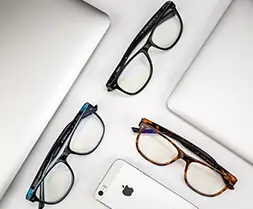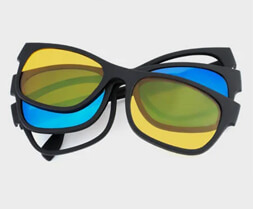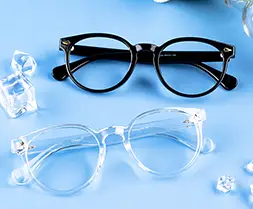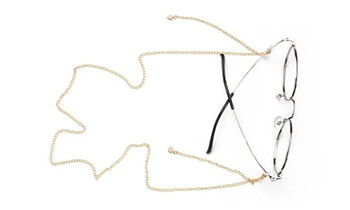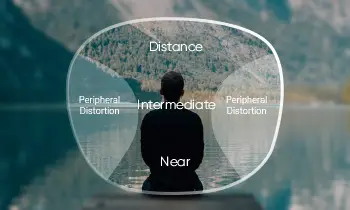In general, the eyesight of people will slowly decline with the increase of age; face-to-face, they can only see the general outline of others, and then a larger word will be blurred from a distance. But vision suddenly declined a lot, then we must pay attention to it, and it may be related to some habits and diseases. As people's dependence on cell phones, computers, and other electronic products deepens, people's eyesight is also on the decline. So, is it that all sudden vision loss is related to unhygienic use of the eyes? In fact, no, vision has a great relationship with our body; through the depth of vision, we can even spy on the health status of the body. Generally speaking, there are the following 10 main reasons for a sudden loss of vision.
Staring at the screen all day long
The survey found that most people stare at computers, smartphones, and TVs for a full 400 minutes a day. The study revealed that people's blink times during this period would be cut by nearly 70%. Blinking to few times can constitute sore and stinging eyes. At the same time, reading on the screen will make the eyes work more strenuous because the digital graphics are composed of tiny dots and are not as clear as the physical characters on the printed page. Over time, the reader will suffer from "digital eye fatigue," vision loss and blurred vision, etc.
Wearing contact lenses for too long
The longer you wear contact lenses, the more dust, mucus, proteins, and minerals will build up on the lenses. In addition to causing blurred vision, these sticky substances can also cause damage to the eyes, such as dry eyes and painful inflammation. A simple test is to take off the contact lenses and put on the frame glasses. If your vision becomes clearer, then it is time to clean or replace your contact lenses. It is best to wear contact lenses sparingly during the hot summer months and in the spring when there is a lot of sand and wind. It's best to have a pair of glasses as a backup, and it's extremely easy to buy eyeglasses online these days.
Corneal abrasions
This is often caused by trauma, with symptoms such as visual confusion, redness or swelling, or a foreign body feeling in the eye. Minor abrasions will heal on their own within a few days, but in more severe cases, antibiotic drops may be prescribed to prevent infection or steroid drops from reducing inflammation and scarring, which can lead to permanent vision loss.
Pregnancy
Alterations in visual function (e.g., blurred and double vision) are more common during pregnancy. This is due to changes in hormone secretion in the body that can trigger changes in the fluid behind the cornea, altering the shape and thickness of the cornea and causing transient myopia or hyperopia that does not return to normal until after delivery. Therefore, it is important to pay attention to your eye habits during pregnancy and the month after delivery to give your eyes adequate rest. Hormonal changes caused by oral contraceptives and hormone replacement therapy may also affect vision. In addition, certain diseases (such as rheumatoid arthritis and diabetes) can also increase this risk.
Certain medications are taken
Antihistamines, antihypertensives, or antidepressants may cause astringency, dry eyes, and blurred vision because they slow down the production of tears or alter their composition, causing them to evaporate too quickly. Usually, it will get better after stopping the medication, but if the problem is serious, you need to find a doctor to adjust the medication program.
Glaucoma
The disease is like an "invisible killer." The initial symptoms are not obvious, but the attack on the eyes is very powerful; when the vision changes, many people have permanently lost part of their visual function. The risk of glaucoma is not just for the elderly but for all ages. People over 40 years old with a family history of glaucoma, diabetes, high blood pressure, and high prescription are all at high risk for glaucoma. Therefore, it is important to keep up with eye exams. People aged 18 to 60 should be examined at least once every two years, and those over 60 should ideally be examined annually.
Retinal detachment
Retinal detachment is most common in middle-aged and elderly people. When a partial detachment of the retina occurs, the patient has a fixed cloud-like shadow in the visual field on the opposite side of the detachment. In the case of macular detachment, the central visual acuity decreases sharply.
Diabetes mellitus
The early symptoms of diabetes manifestation appear to include: eye fatigue, blurring, and vision loss. The eyes are easily fatigued, and the vision decreases sharply. This is mainly because when blood sugar fluctuations in the body of diabetic patients caused by the increase in blood sugar, glucose, and its metabolites into the lens of the eye, tissue salt with a large number of sugar discharge, osmotic pressure is reduced, and water molecules through the lens capsule excessive transfer to the lens, the lens expansion becomes convex, the front and rear curvature changes, refractive power enhanced, the formation of transient myopia; when blood sugar is reduced, causing the opposite osmotic pressure change, then farsightedness occurs When blood glucose decreases, it causes the opposite change in osmolarity, and hyperopia occurs.
Hyperthyroidism
Generally, hyperthyroidism alone does not affect vision. However, hyperthyroidism can easily be combined with hyperthyroidism-related eye disease, which can cause eye symptoms such as proptosis, blurred vision, decreased vision, diplopia, photophobia, and tearing. Therefore, it is recommended to go to an ophthalmologist to check the degree of proptosis and visual acuity to determine whether there is a hyperthyroidism-related eye disease.
Stroke
Most stroke patients do not have any prior warning, but there exist a few stroke patients with an aura such as hemianesthesia, hemifacial numbness, hemianesthesia, sudden visual double vision blur, etc., for just a few minutes an hour before the onset of stroke.
In summary, it is important to have regular eye examinations. People aged 18 to 60 should be examined at least once every two years, and people over 60 should preferably be examined annually. In addition, factors such as excessive eye use and taking certain medications can also lead to vision loss. Vision loss is not accidental, and it has a lot to do with daily eye habits. Therefore, you should pay attention to reasonable eye use, let your eyes get sufficient rest, and eat more food to protect your eyes. Once you find yourself in a situation of rapid vision loss, you should promptly go to the hospital for a consultation to identify the cause and carry out the targeted treatment.



